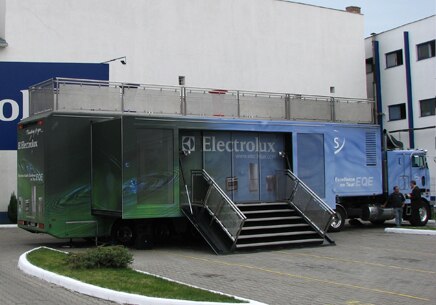
Transporting Electrolux products typically makes a minor contribution to their life cycle CO2 emissions - less than 1% in the case of a washing machine. Though small, this figure can be squeezed further, and Electrolux has set a target to reduce CO2 emissions from transport by 15% between 2010 and 2014.
Monitoring carriers’ transport emissions is a first step in achieving this target. In 2008, Electrolux European Logistics launched a project with an environmental research center in Italy to map the CO2 impacts of logistics movements. A life cycle assessment approach was adopted and combined with improved Internal processes and IT systems. The new logistics platform is capable of capturing data on parameters such as distance, weight and truck engine type and uses it to calculate carbon emissions of each shipment automatically.
Italy’s successful carbon-focused logistics platform forms the basis for a global roll-out program under the Green Spirit umbrella and will be used to deliver data for a KPI on transport-related carbon emissions.
In addition to measuring CO2 from transport, Electrolux has a long track record of choosing lower emission transport modes and using higher capacity vehicles, as well as improving loading patterns and increasing filling rates.
Environmental considerations are part of the working relationship with carriers. For instance, environmental requirements are included in tender documents and carriers’ performance is measured and monitored through the new logistics IT platform. In addition, they are audited periodically.
One of the most successful initiatives to maximize truck carrying potential was a joint project between Electrolux and its suppliers. Carriers and trailer manufacturers joined forces to develop the innovative ‘back door extended’ trailer, while R&D and Quality reduced packaging width. The final result was a trailer with a capacity 30% higher than standard versions.
